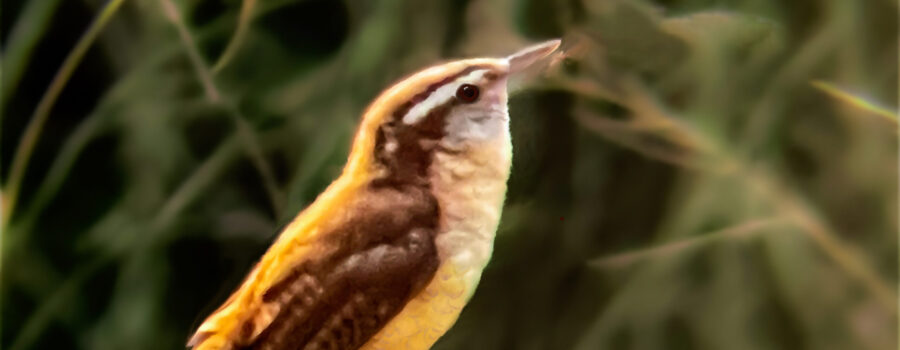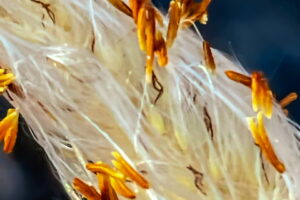The Carolina Wren Sings a Beautiful Song

Carolina wrens (Thryothorus ludovicianus miamensis) are one of the most common birds that I see on my property. There are several pairs that live in various spots in my yard including one pair that lives somewhere near the house. Unfortunately, until recently I hadn’t been able to get a decent photo of one. They tend to be a little shy and spend a lot of their time in the tree branches or more commonly in the underbrush. When they are out in the open, they don’t tend to stay put for very long. Instead, they tend to flit around from place to place. One afternoon, though, I finally caught the male who lives near the house sitting on a fence post belting out his territory marking song. I grabbed my camera and long lens and snuck around from the side. He was really into his song, and he went on for several minutes, which is longer than usual. The light was pretty harsh, but I was finally able to get a couple decent shots. Once he finished, he flew off into the woods, probably to hunt for food. Earlier that day I had seen him, his mate, and a fledgling looking for insects along the front of the porch. Mom and Dad were still feeding the fledgling some, but it was also learning to feed itself.
Carolina wrens are found in the eastern United States, extreme southeastern Canada, and northeastern Mexico. There are seven subspecies within that range including our very own Florida subspecies (miamensis), which is found from north central Florida south through the rest of the state. These little birds are omnivorous and mainly eat beetles, ants, small grasshoppers, bees, wasps, and spiders. Occasionally they will take small lizards and frogs as well. They sometimes eat fruit and rarely seeds. If suet is offered, they will also sometimes eat at feeders. Wrens can live to between six and ten years, and once they have chosen a mate, the pairs tend to stay together for life, but mate switching does occur rarely.
Down here in the southern part of the Carolina wren’s range, a pair can have three to four clutches per year. Further north a pair will usually have two to three clutches. Average clutch size is three eggs, but nests have been found containing up to seven eggs. Nests are made up of sticks, twigs, and strips of plant material. The inside is lined with moss or hair. Nests are commonly found in hollow trees, behind loose bark, or in man made nesting boxes. During the breeding season, both sexes are highly territorial, but the male is the one who sings (not that females are incapable of singing). Both sexes incubate the eggs and feed the young. When the breeding season is over the birds become less territorial. Interestingly, even during the breeding season, there are some “friend” birds, that a pair may allow into the territory. Generally, these tend to be other species of small songbirds.
I enjoy having these guys around, especially when they have a couple of fledglings. It’s quite comical to see the young one sit on a branch and beg to be fed. From time to time one of the adults will feed it, but frequently they’ll ignore the cries. Finally, Junior will get tired of begging and hop down and begin foraging with the adults. I guess you’d call that tough love.






Recent Comments